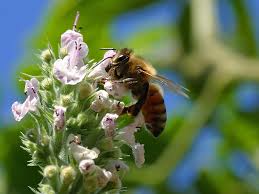 Awareness of the benefits of pollinators is at an all-time high. Bees are no longer thought of as potentially painful nuisances, but as integral parts of the food chain. Landscapers need to know how to install pollinator-friendly features in landscaping and how to avoid anything that could harm pollinators. Homeowners and businesses want landscaping that brings pollinators to their yards, a trend that is expected to grow. Here are just a few examples of pollinator-friendly landscaping practices.
Awareness of the benefits of pollinators is at an all-time high. Bees are no longer thought of as potentially painful nuisances, but as integral parts of the food chain. Landscapers need to know how to install pollinator-friendly features in landscaping and how to avoid anything that could harm pollinators. Homeowners and businesses want landscaping that brings pollinators to their yards, a trend that is expected to grow. Here are just a few examples of pollinator-friendly landscaping practices.
Add Variety
The best way to attract pollinators is through biodiversity. That is to say, landscapes should have a large variety of plants. Look to ensure that at least one plant is in bloom at every point during the growing season. By installing a greater variety of plants, you will not only attract greater numbers of pollinators to the landscape, you’ll attract a greater variety as well.
Avoid Hybrids
Hybrid flowers usually look great, but they often don’t smell all that great, particularly to bees and other pollinators. Many hybrids are also missing the pollen and nectar that pollinators feed on, making them unattractive to pollinators. Avoid hybrids at all costs.
Forget Pesticides
Pesticides are indiscriminate in how they kill. There are certain varieties that are less harmful to pollinators, but no pesticide is absolutely safe. The best solution is to plant native species that are already resistant to problem insects. In addition to using resistant plants, provide the pests with a food they prefer. In particular, provide larval host plants in your landscape to draw pests away from favored crops. Remember too that butterflies, those beautiful, winged pollinators, were once voracious caterpillars. Sometimes you have to put up with pests if you want pollinators.
Leave Dead Limbs
The human drive to establish order is admirable, but nature has an order all of its own. That ugly dead limb that humans rush to remove is actually a great nesting site for a number of pollinators. If the limb doesn’t pose a threat to life, limb (human limb that is), or property, then consider leaving it in place. In fact, do everything you can to increase nesting opportunities by preserving areas of bare soil, reducing mulch, and installing nesting boxes. Get rid of some lawn while you are at. Lawns require too much water anyway.
Pollinators Are Gross
Pollinators don’t just eat nectar, they are also attracted to things like moist animal droppings, rotten fruits, and urine. These things contain resources that pollinators need, so don’t eliminate them. In fact, you might want to consider adding landscape features that will attract certain animals so that they will leave behind the resources that pollinators need.
Resources
http://www.fs.fed.us
http://www.pollinator.org
https://pollinatorgardens.org
